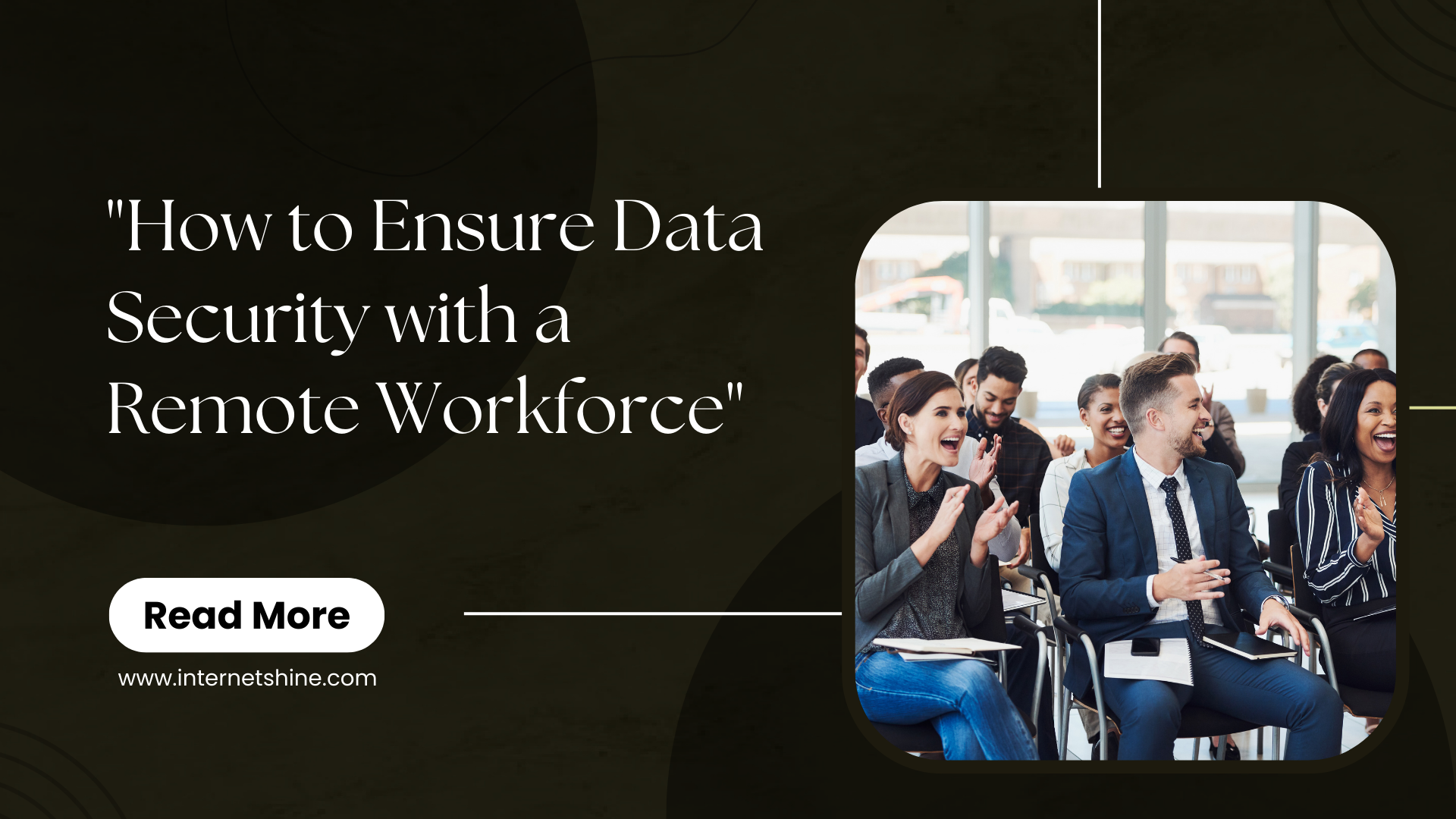How to Ensure Data Security with a Remote Workforce
As the world increasingly shifts towards remote work, organizations face new challenges in ensuring data security. While remote work offers numerous benefits such as flexibility, cost savings, and access to a global talent pool, it also introduces vulnerabilities that can be exploited by cybercriminals. Ensuring data security in a remote work environment is essential to protect sensitive information, maintain customer trust, and comply with regulatory requirements. Here are key strategies to safeguard your data while supporting a remote workforce.
1. Implement a Robust Security Policy
A well-defined security policy is the foundation of data security in a remote work environment. This policy should outline the rules and procedures for handling sensitive data, accessing company systems, and using personal devices for work. It should also include guidelines on password management, data encryption, and the use of virtual private networks (VPNs). Ensure that all employees are familiar with the security policy and receive regular training on best practices.
2. Use Strong Authentication Methods
Implementing multi-factor authentication (MFA) is critical to prevent unauthorized access to your systems. MFA requires users to provide two or more forms of verification before they can access company resources. This could include something they know (a password), something they have (a smartphone or security token), or something they are (biometric verification). By requiring multiple forms of authentication, you add an extra layer of security that makes it harder for cybercriminals to gain access.
3. Secure Devices and Networks
Remote workers often use personal devices and home networks that may not have the same level of security as corporate systems. To mitigate this risk, require employees to install antivirus software, enable firewalls, and keep their operating systems and applications up to date. Encourage the use of VPNs to encrypt data and protect it from interception by malicious actors. Additionally, consider providing company-issued devices with pre-installed security software to ensure consistent protection.
4. Encrypt Sensitive Data
Encryption is a powerful tool to protect sensitive data from unauthorized access. Ensure that all data transmitted between remote workers and your company’s servers is encrypted using strong encryption protocols. Additionally, encrypt data stored on devices, particularly if they contain sensitive information. In the event of a security breach, encryption makes it much more difficult for cybercriminals to access your data.
5. Conduct Regular Security Audits
Regular security audits are essential to identify vulnerabilities in your remote work infrastructure. Conducting audits allows you to assess the effectiveness of your security measures and address any weaknesses before they can be exploited. These audits should include reviewing access logs, testing for vulnerabilities, and ensuring compliance with your security policy. Use the findings from these audits to continuously improve your security posture.
6. Provide Security Training and Awareness
Human error is a leading cause of data breaches, making employee training and awareness crucial components of your data security strategy. Regularly educate your remote workforce on the latest security threats, such as phishing attacks, social engineering, and ransomware. Provide guidance on recognizing and reporting suspicious activity, and encourage a culture of security awareness where employees feel responsible for protecting company data.
7. Monitor and Respond to Security Incidents
Implementing real-time monitoring tools allows you to detect and respond to security incidents as they occur. Set up alerts for unusual activity, such as multiple failed login attempts or access from unfamiliar locations. Have a clear incident response plan in place that outlines the steps to take in the event of a breach, including isolating affected systems, conducting a forensic investigation, and communicating with stakeholders.
8. Ensure Compliance with Data Protection Regulations
Remote work can complicate compliance with data protection regulations such as GDPR, CCPA, and HIPAA. Ensure that your security measures meet the requirements of these regulations, particularly in areas such as data storage, access controls, and incident reporting. Regularly review and update your security policies to remain compliant with changing regulations.
9. Foster a Security-First Culture
Finally, fostering a security-first culture is key to ensuring that data security remains a top priority for your remote workforce. Encourage open communication about security concerns, and reward employees who demonstrate strong security practices. By embedding security into your company culture, you can create an environment where every employee takes ownership of protecting your data.
Conclusion
Securing data in a remote work environment requires a multi-faceted approach that addresses both technical and human factors. By implementing a robust security policy, using strong authentication methods, securing devices and networks, encrypting sensitive data, conducting regular security audits, providing ongoing training, and fostering a security-first culture, you can protect your organization’s data while supporting the flexibility and productivity of a remote workforce. As remote work continues to grow, investing in data security will be essential to safeguarding your business and maintaining the trust of your customers.

